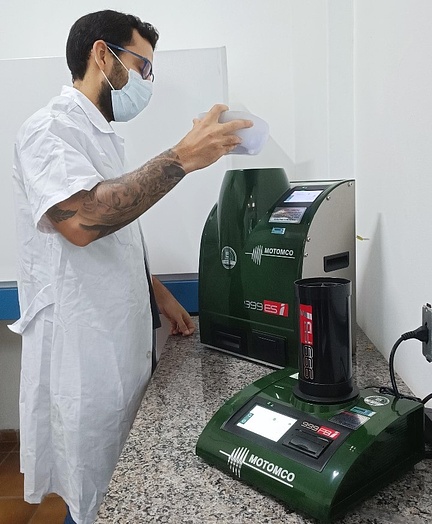Rondônia is gaining prominence in Brazil’s agricultural landscape, with optimistic projections for the 2024 grain harvest, estimated at 4.1 million tons. Soybeans, the flagship of the state’s agriculture, show significant growth, with a cultivation area of 635.5 thousand hectares and an estimated production of 2.2 million bags, representing a 9% increase compared to the previous harvest.
After harvesting, the evaluation of grain quality and market value becomes crucial for both buyers and sellers. The Association of Soybean and Corn Producers of Rondônia (Aprosoja-RO) is investing in training courses on plant classification to ensure the delivery of a quality product.
Grain classification is conducted through detailed analysis of collected samples to identify characteristics that meet the quality standards required by the industry.
Aprosoja-RO’s grain classification specialist, Claudionice Alves Domiciano, emphasizes that the main defects and impurities affecting classification include broken, green, and fermented grains, among others. Serious defects such as moldy, burnt grains, and moisture are decisive factors in classification.
Claudionice highlights the importance of moisture for grain stability and durability, as excessive levels can promote the development of fungi and insects, compromising quality. “The classification process is essential because it defines the market value of the product. In this way, high-quality grains achieve higher prices in the market,” she explains.
According to her, for soybean harvest, the ideal moisture level is between 12% and 13%, and for commercialization, 14%. In the case of storage, it is essential to maintain moisture at recommended levels to preserve grain integrity. Above the recommended levels (14%), there is a greater risk of issues such as clumping, increased insect activity, and the risk of spontaneous combustion. “These conditions can lead to significant financial losses for producers,” she adds.
The classifier points out that one of the biggest challenges for grain buyers is finding qualified labor to perform this task accurately and according to the regulations of the Ministry of Agriculture, Livestock, and Supply (Mapa). Additionally, standardizing processes is essential to ensure compliance and grain quality.
Agronomist Roney Smolareck, from Loc Solution, the company that owns the Motomco brand of grain moisture meters, mentions that Brazilian legislation, through Law No. 9,972/2000, establishes the mandatory classification of grains for commercialization and import, reinforcing the importance of this procedure for food security and transparency in commercial transactions.
“The quality level of grains can affect the final value of the product, which is why it is increasingly important to monitor, especially the moisture content, from the field to industrialization,” he said, noting that proper grain classification and sample cleaning should be performed for moisture index verification. This is because moisture is the percentage of water found in the product sample, free from foreign matter and impurities (MEI).
“Given that production is exposed to adverse weather conditions in the field until harvest, it is common to find grains with a series of defects in the post-harvest stages. That is why it is essential that grain classification be carried out before the moisture measurement procedure,” emphasized Smolareck.
RONDÔNIA – The 2023/24 grain harvest in Rondônia saw an 8.7% increase compared to the previous harvest. This growth is attributed to a 7.7% expansion in planted area, reaching just over one million hectares, and an estimated average productivity of four thousand kilos per hectare, which is 0.9% higher than in the 2022/2023 harvest.
A report released earlier this week in the 14th edition of the Agricultural Bulletin, published by Embrapa Rondônia’s team, indicates that while production in the state is expected to increase, national estimates predict a 7.6% reduction in grain production, reaching 295.5 million tons, which represents a drop of 24.36 million tons compared to the previous harvest.
The Gross Agricultural Production Value of Rondônia in 2024, calculated by Embrapa Rondônia’s Technology Forecasting and Evaluation Sector (SPAT), is estimated at 19.9 billion reais, with highlights in cattle, soybeans, coffee, and corn.
About Loc Solution/Motomco – Loc Solution, a company based in Curitiba (PR), owns the Motomco brand of grain moisture meters. The company manufactures, markets, and leases the equipment, being a reference in various agricultural regions of the country. Originally from Canada, the Motomco brand is a national leader in the grain moisture meter segment. For more information, visit motomco.com.br.
 Paraguai
Paraguai




